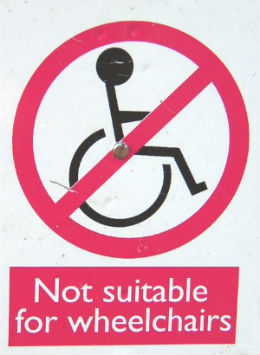
The National Center on Education Statistics estimates that up to 11% of students in higher education have a diagnosed disability. These disabilities may be physical such as visual or auditory impairment, or may stem from biological processing problems that interfere with the ability of a student to process some types of information. Unfortunately, many instructors don’t take this into account when it comes to online course design.
According to a Wichita State University study, as many as 80% of all online instructors do not consider the needs of students with disabilities when designing or instructing their courses despite the high percentage of post-secondary students with disabilities. The reasons for this oversight are varied. In my experience, instructors can become overwhelmed by the sheer number of potential disabilities present in a classroom. Attempting to tailor course design for teaching students with disabilities and accommodating a variety of learning styles can seem a daunting task. Additionally, many instructors are under the mistaken assumption that assistive technologies such as text-to-speech software automatically place students with learning disabilities on a level playing field with other students in the online classroom. In reality, online courses are rarely set up to maximize the effectiveness of these assistive accommodations. A beautifully laid out course page with color highlighted text, jazzy animations, and relevant youtube videos might be engaging for the average student, but can be a nightmare to navigate for a student using assistive technologies.
Subsequently, these students may have problems accessing critical course content. Fortunately, there are some very simple strategies to make information more accessible to all students. The following 8 online course design strategies employ universal design principles that will assist all students (with or without disabilities) to navigate your course with more confidence.
8 Online Course Design Tips to Accommodate Teaching Students with Disabilities
- Cue important information: Provide a table of contents or site map to show how information is organized within your course. Include an audio description of where students can find important course information.
- Practice redundancy: Describe course content in a variety of ways. Include detailed captions for images and tables. Provide additional notes on PowerPoint slides. If using a video as part of course content, ensure that closed captions are used or that a transcript of the video is available.
- Be consistent: Rather than changing navigation bars or buttons from page to page, one navigation scheme should be used consistently throughout your online course design.
- Organize your links: Organize long lists of hyperlinks into categories, and provide a label and a short description of the site content for each link.
- Keep it simple:Avoid using color, flashing text and unnecessary graphics to emphasize points. Avoid using media that requires special software or plugins that must be obtained from external sites.
- Be flexible: For example, offer students a choice of several possible essay questions or provide students a choice in how they will present the final product of a research project.
- Use asynchronous discussion: Synchronous discussions can be overwhelming for students who suffer from distractibility or factual recall limitations. Asynchronous discussions allow all students more time for reflection and clarification.
- Be creative when extending times for testing: Extended time on exams is an incredibly common modification for teaching students with disabilities in the brick and mortar classroom. However, most learning management system test modules do not allow instructors to make special accommodations for individual learners. One way to get around this modification is to leave the time limits open, but record the amount of time spent in an exam. Students are given a prescribed amount of time to take the exam, and this time can be extended for students who have provided documentation for their extended time accommodation.
Incorporating these 8 simple strategies into your online classroom will benefit all students, including those with disabilities. With distractions and accessibility problems eliminated, all students will be able to access and better engage with the course content, ultimately making them more successful online learners.
Additional References:
Barnard-Brak, L., & Sulak, T. (2010). Online versus face-to-face accommodations among college students with disabilities. American Journal of Distance Education, 24 (2), 81-91.
Bricout, J. C. (2001). Making computer-mediated education responsive to the accommodation needs of students with disabilities. Journal of Social Work Education, 37(2), 267-281. Retrieved from http://www.eric.ed.gov/ERICWebPortal/detail?accno=EJ631112
Dukes III, L. L, Koorland, M. A., & Scott, S. S. (2009). Making blended instruction better: Integrating universal design for instruction principles in course design and delivery. Action in Teacher Education, 31(1), 38-48.
